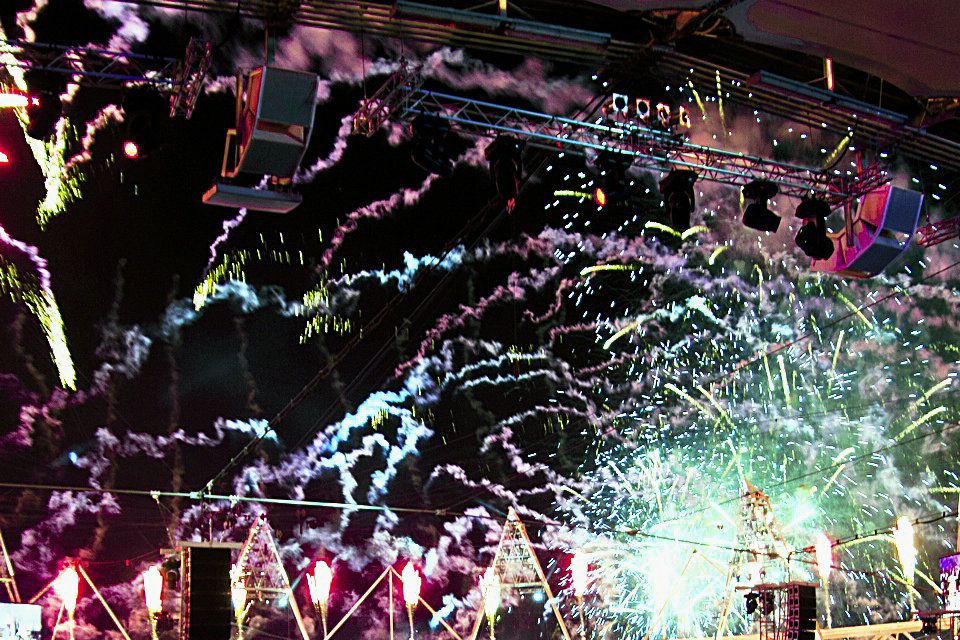

A Colour Symphony, Op. 24, F. 106, was written by Arthur Bliss in 1921–22. It was his first major work for orchestra and remains one of his best known compositions. Bliss wrote it under the supervision of his teacher, Ralph Vaughan Williams.
Orchestration
The symphony is scored for 3 flutes (one doubling on piccolo), 2 oboes, cor anglais, 2 clarinets, bass clarinet, 2 bassoons, double bassoon, 4 horns, 3 trumpets, 3 trombones, tuba, 2 tympanists, cymbals, 2 harps and strings.
History
A Colour Symphony was written to be performed at the Three Choirs Festival, held in 1922 in Gloucester, at the invitation of Sir Edward Elgar, who also invited Herbert Howells and Eugene Goossens to write a piece each. Howells wrote Sine Nomine for wordless chorus, which was not given its second performance until his centenary year 70 years later, in 1992. Goossens wrote a piece called Silence for chorus and orchestra. Elgar’s own contribution was his orchestration of Johann Sebastian Bach’s Fantasia and Fugue in C minor.
Bliss decided to write a symphony, but was at first undecided what the theme or character of the work would be. He could not get started for some weeks. One day, by chance, he came across a book on heraldry in which he read of the symbolic meanings attached to certain colours; this gave him the notion of writing a work about colours. He attempted to give each movement a character corresponding to these meanings, but without attempting to depict the colours themselves. Bliss dedicated the symphony to the conductor Adrian Boult.
The first performance, with the London Symphony Orchestra, in Gloucester Cathedral on 7 September 1922, was conducted by the composer. It was not well received at first, due to poor preparation. The work uses a large orchestra, but the platform was so taken up with the chorus required for other works also being performed, that several instruments had to be omitted. Elgar attended, but found it “disconcertingly modern”. It nevertheless entered the repertoire and has been recorded various times, although it is now an infrequent visitor to concert platforms.
Analysis
The four movements are:
Purple
Andante maestoso
slow and majestic in pace and ceremonial in character
The colour of Amethysts, Pageantry, Royalty and Death
Red
Allegro vivace
a glittering, spiky and percussive scherzo, reminiscent of Stravinsky.
The colour of Rubies, Wine, Revelry, Furnaces, Courage and Magic
Blue
Gently flowing
slow, with chords used to depict the lapping of water against a moored boat or a pier
The colour of Sapphires, Deep Water, Skies, Loyalty and Melancholy
Green
Moderato
a double fugue (which has been described as “Schoenbergian” ) on violas, strings, clarinets and woodwinds, leading to a triumphant climax
The colour of Emeralds, Hope, Youth, Joy, Spring and Victory
A theme from towards the end of the Red movement was used as the signature tune of the televised “Royal Institution Christmas Lectures”.
Revision
In 1932, Bliss revised the codas of the first two movements. He conducted the revised work himself in a recording with the London Symphony Orchestra in 1955. Bliss made a stereo recording with the BBC Welsh Symphony Orchestra.
The last movement, “Green”, was separately published as Pyonepsion.
Other uses
In 1977, a ballet called Royal Offering was created, with music based on A Colour Symphony.
A short extract from the ‘Red’ movement was used as the opening music to BBC TV coverage of The Proms until 2011.
The British artist Kevin Laycock created a visual piece called Four Movements in Colour, in which he attempted to portray, in colour, the sounds created by Arthur Bliss. In 2004, Laycock created a series of paintings called Tectonics as a direct response to Bliss’s A Colour Symphony using parallel compositional structures.
Source From Wikipedia